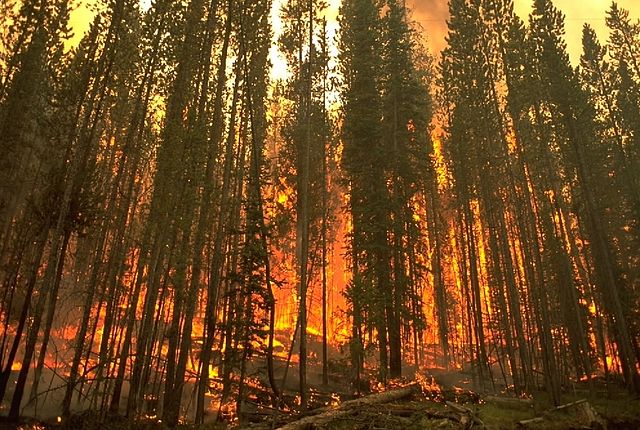By Katrina Marland
Thanks to a particularly dry April, Arizona is kicking off the 2012 fire season with several intense fires. In the Mazatzal Wilderness, which spans Tonto and Coconino National Forests, more than 4,600 acres are currently ablaze, and an impressive cadre of 200 firefighters and 11 aircraft are working to contain it. Other fires bring the state’s total to four major blazes, with roughly 12,000 acres aflame and some evacuations already taking place — something that doesn’t usually happen until later in the season, when the major fires are expected. And Arizona isn’t the only one; Colorado is on fire as well. At about 640 acres, the fire is significantly smaller than Arizona’s but is causing a good deal of anxiety as it bears down on the town of Fort Collins, home to a population of more than 140,000.
To most of us, news of wildfires across the southwest U.S. is upsetting, but hardly unexpected. After all, we’ve been hearing similar news every summer for decades. Even the oldest person probably can’t remember a time when major wildfires in that region were very unusual. But a recent study on the topic shows that what we consider routine is actually a reflection of modern times — and not in a good way.
A team of researchers from Southern Methodist University (SMU) has used data from decades of tree-ring analyses to delve into the region’s ancient fire and climate history. Tree rings keep a record of major events like fires or volcanic eruptions, as well as climatic patterns, so studying them can tell scientists a great deal about times long gone by (check out the American Forests magazine article for more on tree rings). This particular study was the first of its kind, as it combined fire-scar records with tree-ring data from Ponderosa pines across the Southwest and used a statistical model to predict the fire history back as far as 1,500 years ago.
The team found that throughout history, as the climate changed, the weather patterns that bring about fires — dry, hot, often windy weather — remained consistent, arriving at the same intervals and staying for the same amount of time, which meant a fire season of average intensity and duration. Today, however, weather patterns change more frequently, with more frequent droughts and heat waves than in the past. In fact, according to the National Atmospheric and Oceanic Administration, we could be experiencing the warmest year on record, with March 2012 the warmest ever recorded and April following close behind with its third-warmest average national temp. The SMU study suggests that the “megafires” we regard as commonplace throughout the Southwest are anything but. Instead, they’re likely a result of unusually warm, dry conditions that we are experiencing because of climate change and human activity, especially fire suppression. Instead of the more frequent but less intense fires that burn away understory but leave healthy trees standing, we have today’s frightening infernos, which cause a lot more damage.
